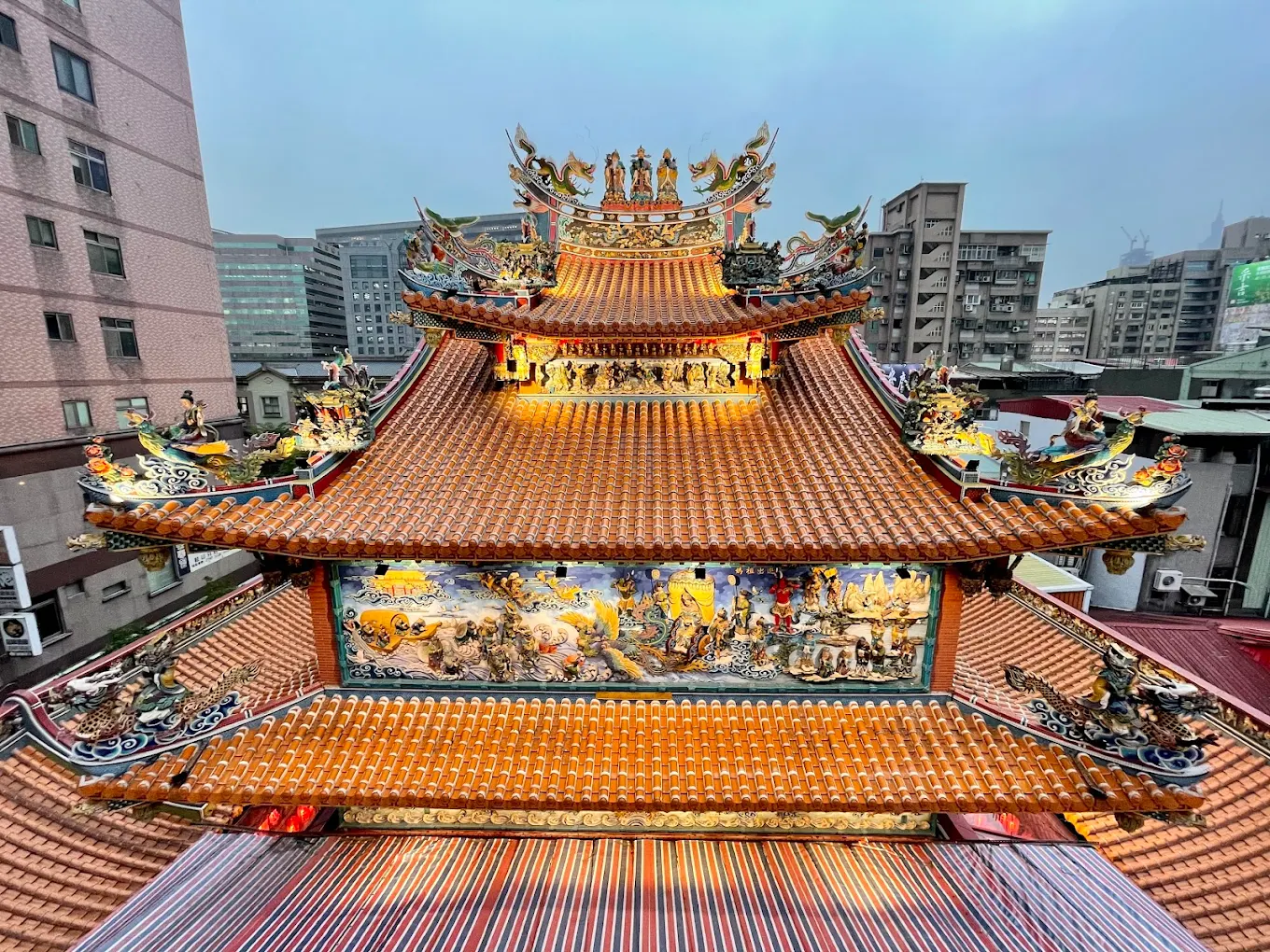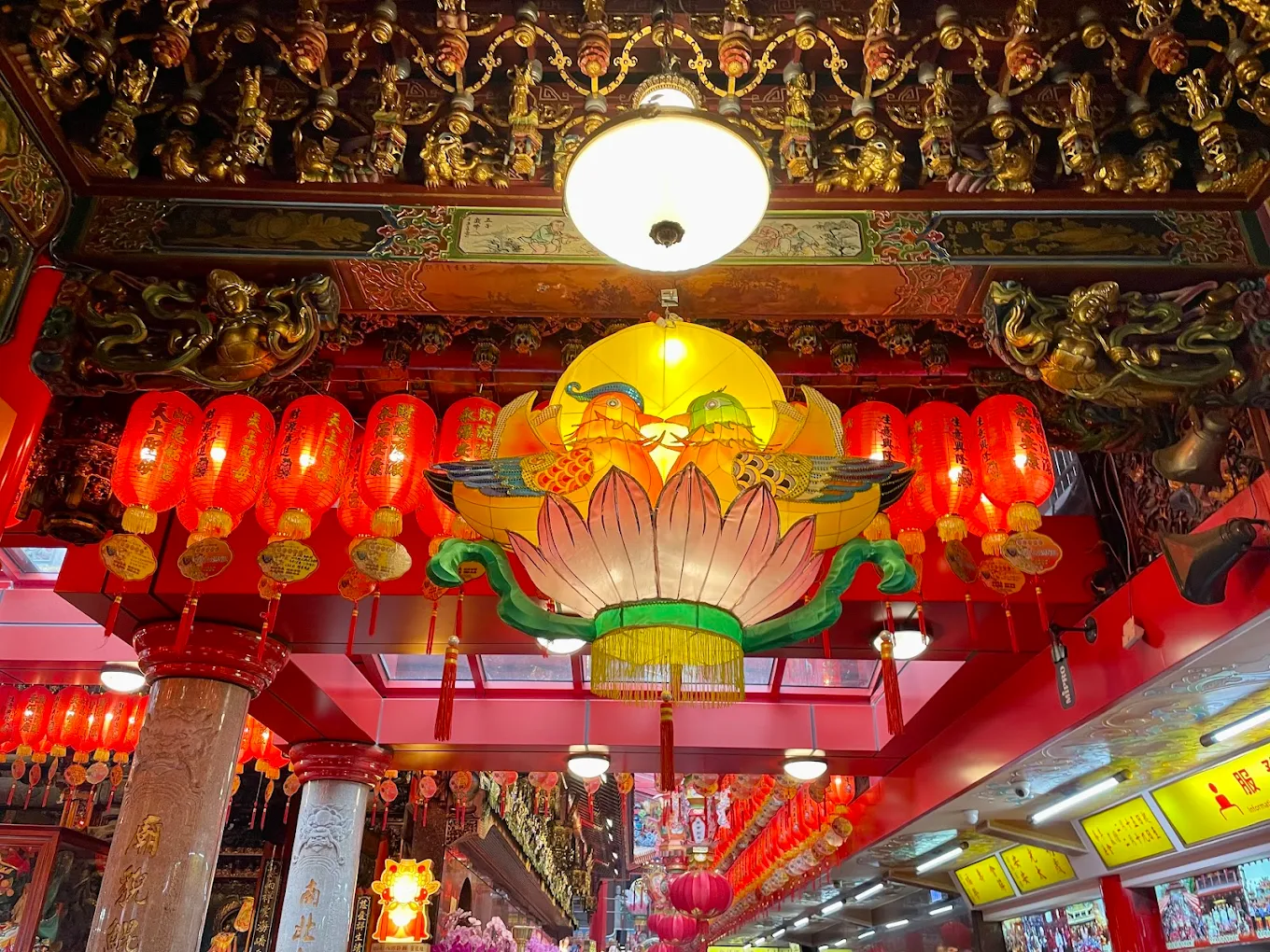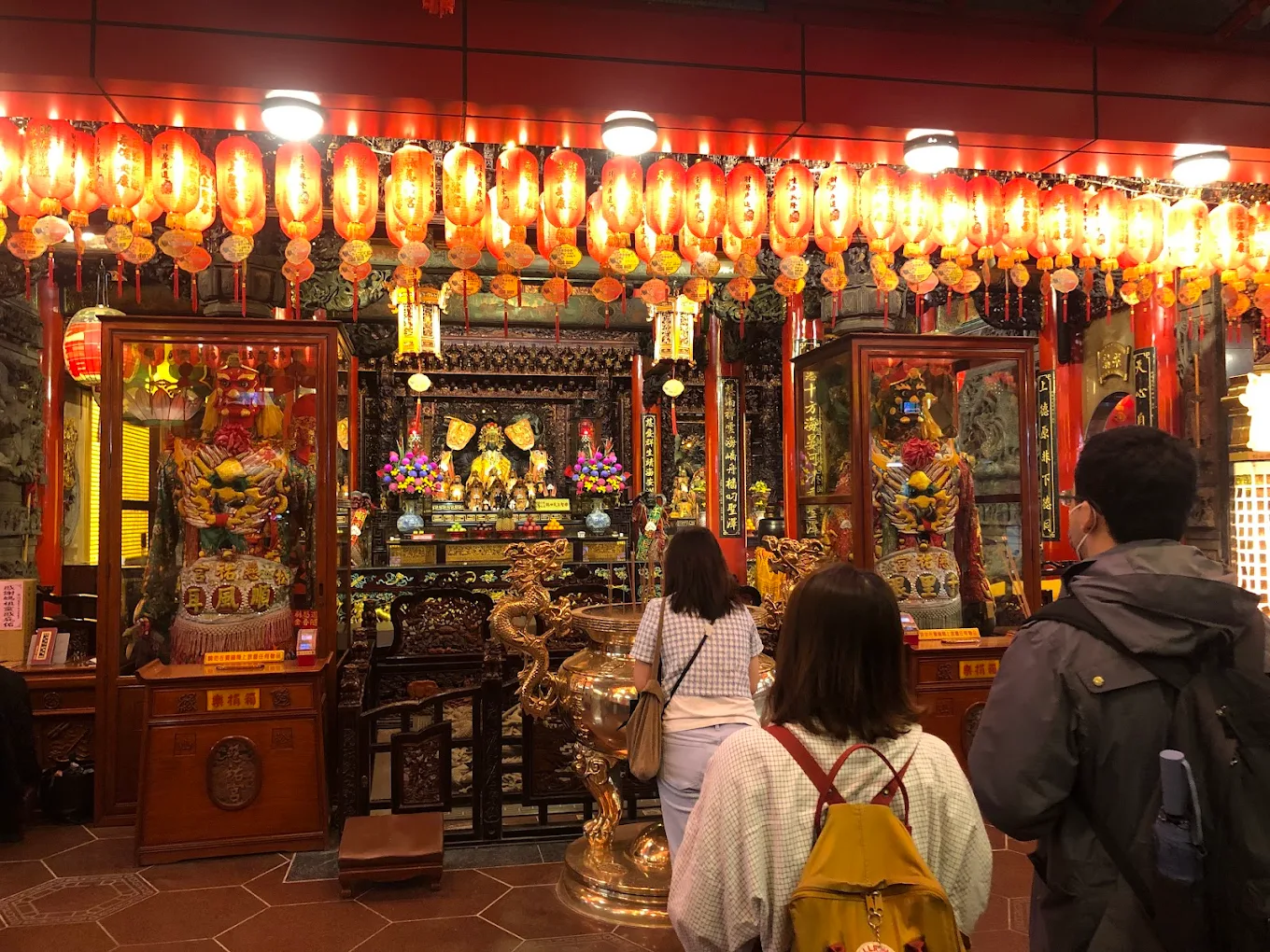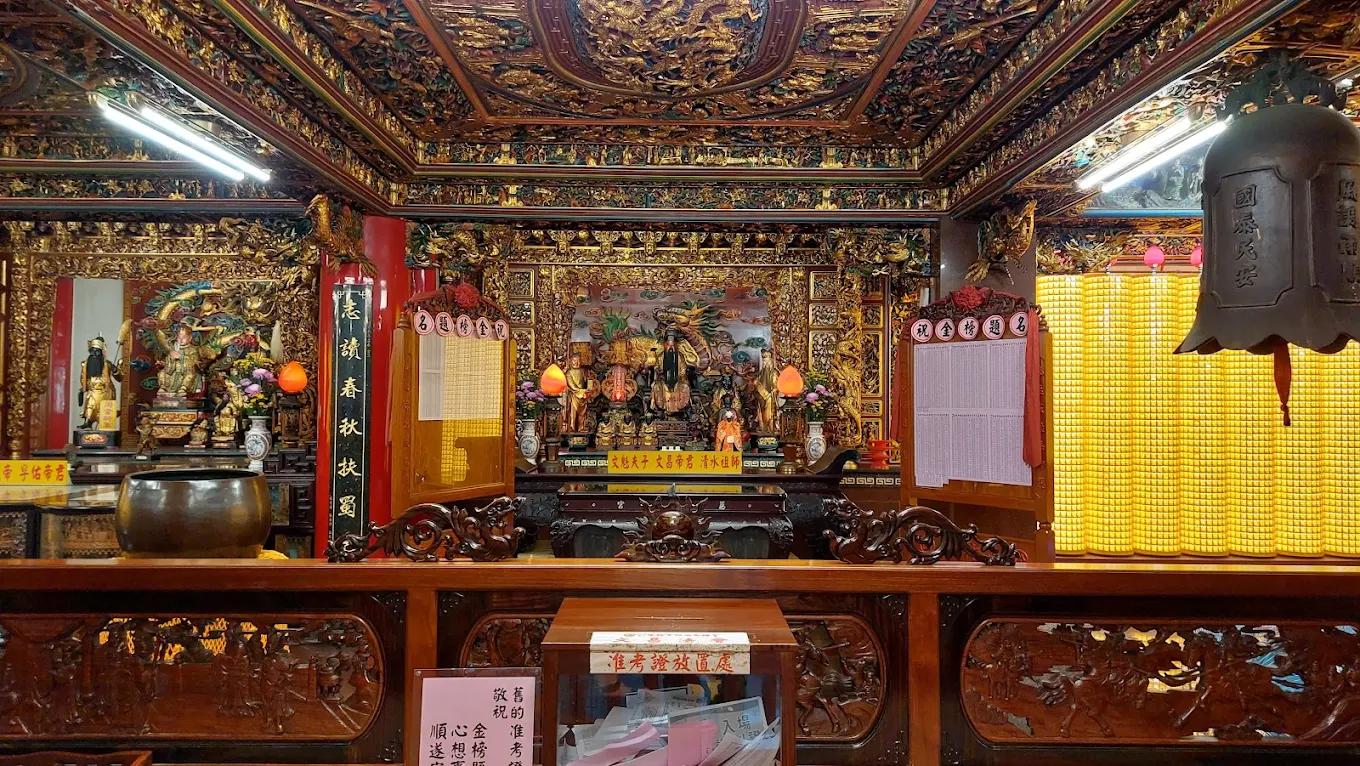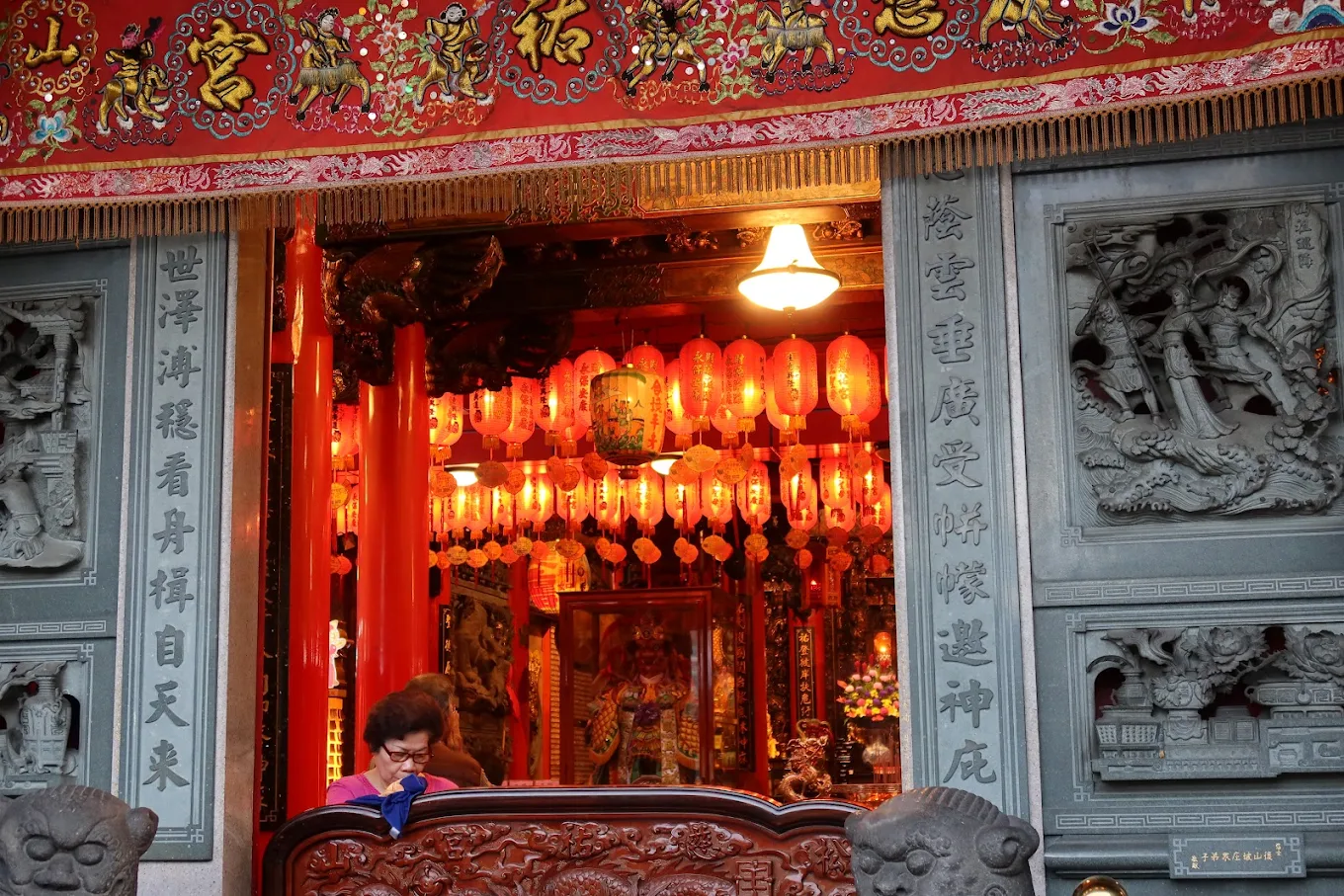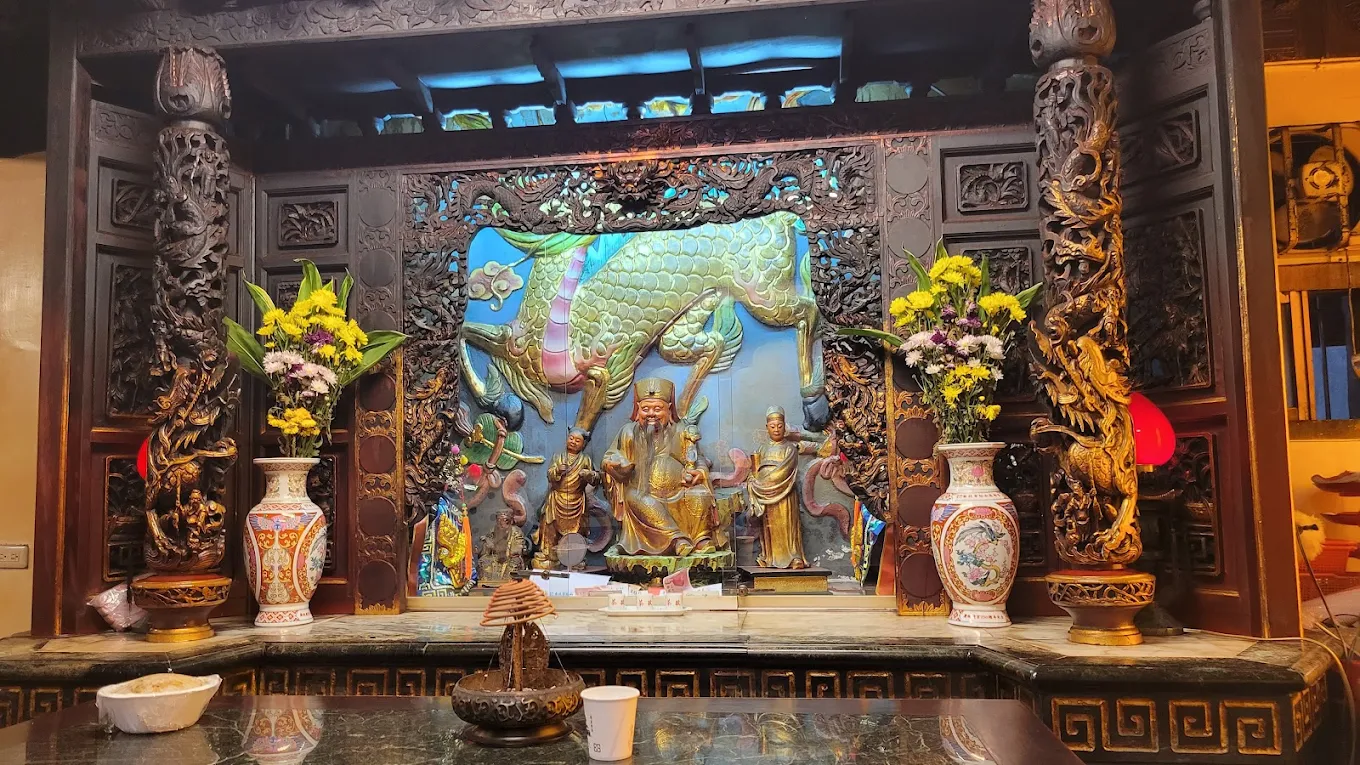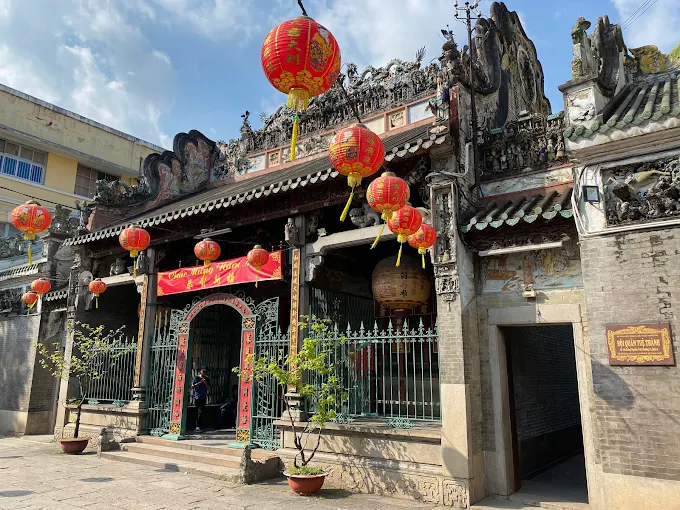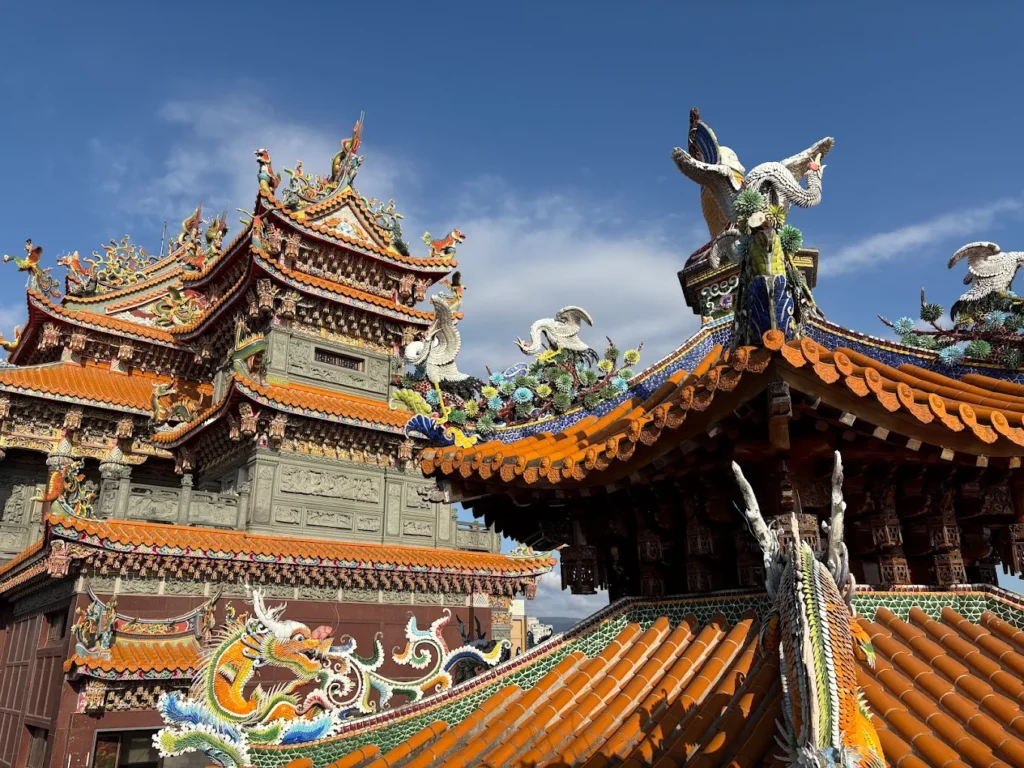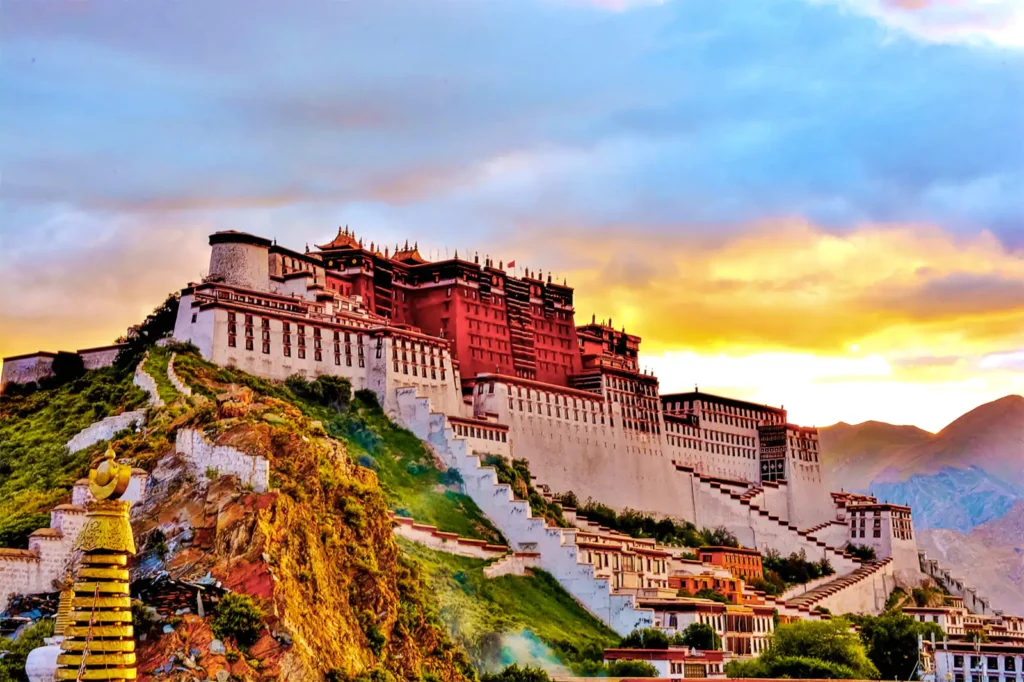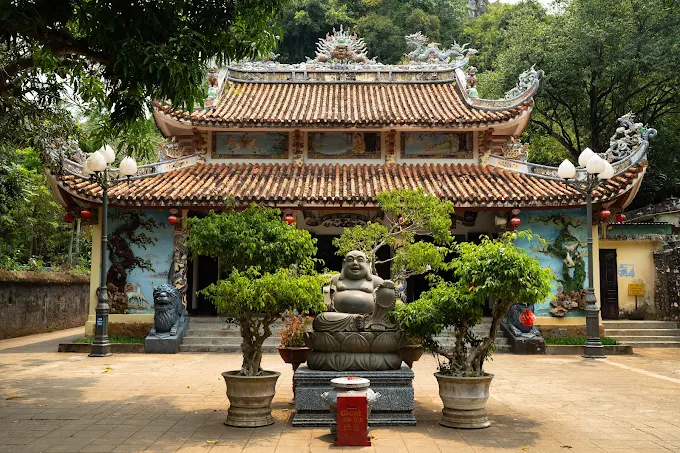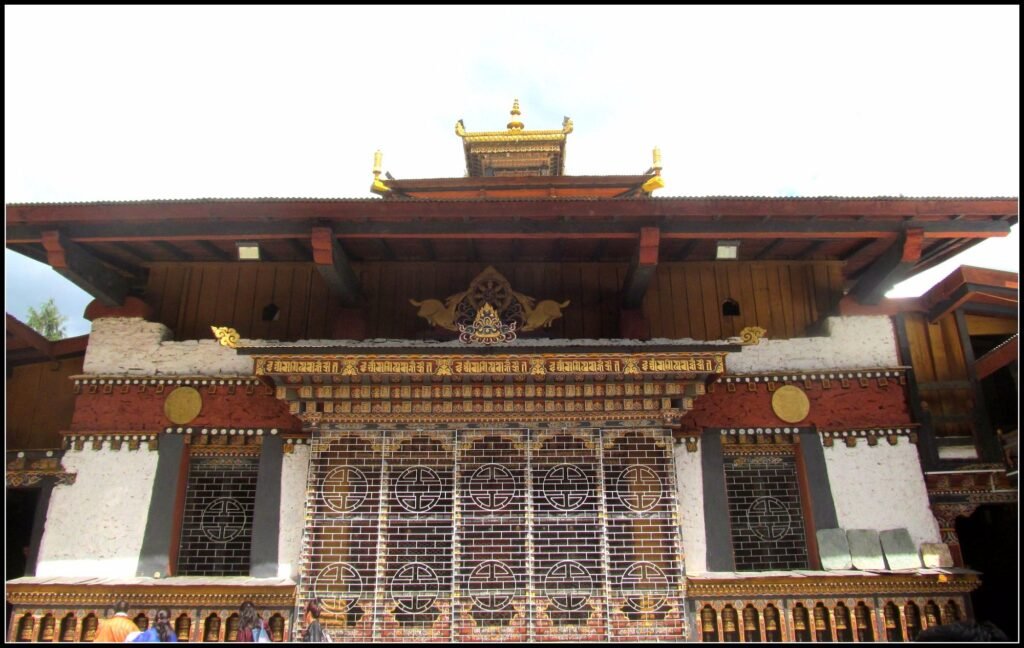Songshan Ciyou Temple: The Fujianese Beacon of Taipei’s Maritime Devotion
Incense tendrils curl through black dragon columns, their ebony sheen catching dawn’s light in Songshan Ciyou Temple, nestled along Taipei’s Bade Road. Founded in 1753 by Quanzhou settlers, this sanctuary honors Mazu [Māzǔ], the Goddess of the Sea, a 10th-century figure deified for shielding sailors from storms. Born Lin Mo in Fujian’s Meizhou, Mazu’s miracles—guiding fishermen through tempests and saving villages from floods—made her a maritime guardian, her statue carried across the Taiwan Strait by Hokkien voyagers. Her camphor wood effigy, robed in azure, anchors a six-story Qing structure, its serenity a haven amid Raohe Night Market’s clamor. A Taipei historical site, the temple invites travelers to hear gongs’ resonant hum and feel the salty breeze of Mazu’s maritime legacy, a Fujianese pulse in Songshan’s heart.
Overview and Significance
Introduction to Songshan Ciyou Temple
This seaside shrine, established in 1753, embodies Taiwanese Folk Religion, weaving Buddhist compassion, Taoist harmony, and maritime reverence into Songshan’s cultural fabric. Its black dragon columns and stone carvings stand apart from Xiahai’s romantic rites, offering tranquility. Taiwanese Folk Religion fosters unity, guiding Songshan through seafaring rituals and charity. The temple draws cultural travelers to its Mazu devotion. Visiting Songshan Ciyou Temple unveils Taipei’s maritime heritage.
Historical Journey
In 1753, Quanzhou settlers, led by monk Chen Wen as temple records note, built this shrine to honor Mazu, seeking protection for their voyages across treacherous seas. The 1860 Treaty of Peking opened Taipei to trade, elevating the temple as a merchant hub, its altars bustling with offerings. Japanese rule (1895–1945) saw it host resistance gatherings, preserving Fujianese identity. Renovations in 1964, led by artisan Wang Fu, restored its Qing artistry, earning historical status. Songshan Ciyou Temple history reflects Hokkien resilience through centuries of change.
Cultural Significance
The Mazu Procession, held on the 23rd day of the third lunar month, transforms Songshan with palanquins and drums, as fisherman Mr. Huang recalls his father’s 1950s prayers for calm seas, a ritual binding generations. Charity drives, aiding local fishermen, embody Mazu’s compassion, while navigation workshops draw Fujianese diaspora from Malaysia. Songshan Ciyou Temple history shapes Taipei’s seafaring identity.
Unique Legacy
Unlike Xiahai’s red thread rituals, Mazu’s sanctuary boasts black dragon columns, their wave-carved forms symbolizing maritime protection, a Fujianese hallmark. Its syncretic worship mirrors Taiwan’s pluralistic faith, centered on Mazu’s guardianship.
Community and Global Impact
The Mazu Procession unites Songshan residents, their chants echoing along Bade Road. Pilgrims from Thailand join rites, while navigation workshops preserve Taipei’s seafaring heritage, fostering pride.
Historical Anecdotes
In 1884, oral histories recount Mazu’s statue glowing during a typhoon, guiding fisherman Li Wei home, a miracle etched in Songshan’s memory, cementing her protective lore.
Social Role
The shrine strengthens Songshan’s bonds through festivals and charity, with lantern-making workshops filling the courtyard with families’ laughter, sustaining community ties.
Artistic Influence
Qing stone carvings, with wave motifs, inspire Taipei’s artisans, distinct from Baoan’s medicinal art, shaping temple traditions. Exploring Songshan Ciyou Temple black dragon columns reveals this legacy.
- The temple thrives in Songshan’s heart.
- Songshan Ciyou Temple history unveils Fujianese resilience.
- Visiting Songshan Ciyou Temple black dragon columns offers artistry.
From Quanzhou settlers’ 1753 prayers, travelers step into Mazu’s sanctuary, where maritime history weaves sacred artistry.
Architectural and Spiritual Features
Iconic Design
The six-story Qing structure, topped with red-tiled roofs, glows under Taipei’s sun, its stone carvings of waves shimmering in lantern light. Black dragon columns, unlike Xiahai’s red lanterns, frame the courtyard with Fujianese maritime flair. Visiting Songshan Ciyou Temple unveils this architectural splendor.
Worshipped Statues/Deities
Mazu’s camphor wood statue, robed in azure, radiates calm, its musky scent blending with incense. Born Lin Mo, her 10th-century miracles—calming storms and saving sailors—deified her as Songshan’s guardian, her gaze guiding devotees through prayers. Flanked by Qianli Yan and Shunfeng Er, her statue anchors the temple’s faith. Songshan Ciyou Temple architecture centers on this sacred icon.
Signature Elements
Black dragon columns, carved with swirling waves, symbolize maritime protection, their ebony forms a hallmark of Mazu’s sanctuary, distinct from Baoan’s medicinal focus.
Materials and Techniques
Quanzhou artisan Wang Fu’s 1964 stonework, with intricate wave patterns, showcases Qing precision, preserved in temple records, reflecting Hokkien artistry.
Lesser-Known Features
Lotus reliefs on side walls, their weathered hues symbolizing Buddhist purity, offer meditative calm, contrasting the courtyard’s vibrant energy.
Preservation Efforts
Songshan merchants funded 1964 renovations, restoring carvings with communal labor, ensuring the Qing legacy endures, a testament to devotion.
Environmental Integration
Feng shui aligns the courtyard with Keelung River’s flow, its banyan tree’s shade fostering reflection amid Songshan’s bustle, a natural haven.
- Visit Mazu’s sanctuary for its Qing structure.
- Admire Songshan Ciyou Temple architecture in Taipei.
- Exploring Songshan Ciyou Temple black dragon columns reveals artistry.
From the courtyard’s ebony glow, travelers join the shrine’s sea-charged rituals, where Songshan’s devotion pulses.
Rituals and Practices
Daily Sacred Rites
Devotees offer incense, its smoky tendrils rising, and pray before Mazu’s altar, seeking safe voyages, their murmurs echoing in the main hall. Gongs hum softly, anchoring Songshan’s faith.
Festival Traditions
The Mazu Procession, on the 23rd day of the third lunar month, fills Songshan with palanquins, as fisherman Mr. Chen recalls his 1970s prayers for calm seas, a ritual uniting the community. Joining Songshan Ciyou Temple rituals during this festival offers vibrancy.
Visitor Engagement
Travelers can join incense offerings, guided by volunteers, their hands tracing Fujianese devotion, immersing in Songshan’s seafaring faith. Visiting Songshan Ciyou Temple offers this ritual immersion.
Spiritual Community Roles
Lay practitioners (jūshì) lead chants blending Buddhist and Taoist hymns, while monks maintain altars, roles rooted in Taiwanese Folk Religion’s communal spirit.
Interfaith Connections
Mazu’s worship weaves Buddhist compassion and Taoist mysticism, reflecting Taiwan’s pluralistic faith, a syncretism unique to Songshan Ciyou Temple rituals.
- Experience the temple’s rituals firsthand.
- Join Songshan Ciyou Temple rituals during the Mazu Procession.
- Visiting Songshan Ciyou Temple offers cultural immersion.
From chant-filled halls, travelers explore tips to engage with Songshan’s sacred legacy.
Visitor Information
Navigating to Songshan Ciyou Temple
Bade Road’s bustling lanes lead to Mazu’s sanctuary, steps from Raohe Night Market, its savory aromas of stinky tofu drifting nearby, a landmark in Songshan’s heart.
Address of Songshan Ciyou Temple
No. 761, Section 4, Bade Road, Songshan District, Taipei City, Taiwan.
Visiting Hours and Etiquette
Open 6 AM–9 PM, visitors should wear modest clothing and avoid photography during prayers, respecting Taiwanese Folk Religion customs, as signage advises.
Transport Options
Take the MRT to Songshan Station, a five-minute walk, or buses along Bade Road, weaving through vibrant markets, offering scenic access to the shrine.
Cultural Immersion Opportunities
Join Mazu Procession workshops, crafting paper boats with locals like Ms. Lin, whose family prayed for safe voyages since the 1980s, a hands-on link to Fujianese heritage. Visiting Songshan Ciyou Temple offers this immersion.
Photography Tips
Capture black dragon columns at dawn, low angles highlighting their sheen, while respecting worshippers’ privacy, avoiding flashes in the main hall.
- Visit the temple via Taipei MRT.
- Explore Songshan Ciyou Temple for festival workshops.
- Navigate to Songshan Ciyou Temple in Taipei.
From offering incense in Songshan’s vibrant lanes, travelers explore the shrine’s philosophical depth.
Cultural and Spiritual Insights
Religious Philosophy
Taiwanese Folk Religion at Mazu’s sanctuary weaves Buddhist compassion with Taoist harmony, fostering maritime unity. Mazu’s guardianship ensures safe voyages, guiding Songshan’s ethics through resilience and care. This syncretism, rooted in Fujianese values, shapes Taipei’s seafaring identity via rituals like the Mazu Procession. The temple’s philosophy grounds devotees in shared values. Visiting Songshan Ciyou Temple unveils this depth.
Cultural Narratives
Legends of Mazu calming a 10th-century storm inspire Songshan’s devotion, as elder Mr. Wu recounts his grandfather’s 1930s tale of a saved fishing boat, cementing her protective lore in Taipei’s memory.
Modern Cultural Connections
Mazu Procession posts on Instagram, tagged #SongshanCiyou, draw younger devotees, their photos of palanquins linking Songshan’s heritage to Taipei’s digital culture. The temple connects to this vibrant scene.
- Discover the temple’s philosophy.
- Explore Songshan Ciyou Temple narratives.
- Visiting Songshan Ciyou Temple connects to modern culture.
From Songshan’s philosophical depths, travelers heed the call to explore Mazu’s vibrant maritime legacy.
Why You Have to Visit
Black dragon columns gleam under incense haze in Songshan’s serene courtyard, a Fujianese beacon of maritime devotion. Mazu’s protective legacy, woven through vibrant Mazu Processions and Qing stone carvings, invites travelers to join Songshan’s rituals. Visiting Songshan Ciyou Temple unveils Taipei’s seafaring soul, where Fujianese faith endures in timeless grace, a journey into the heart of maritime heritage.
- The temple is a must-see in Taipei.
- Experience Songshan Ciyou Temple black dragon columns.
- Visiting Songshan Ciyou Temple reveals maritime heritage.
